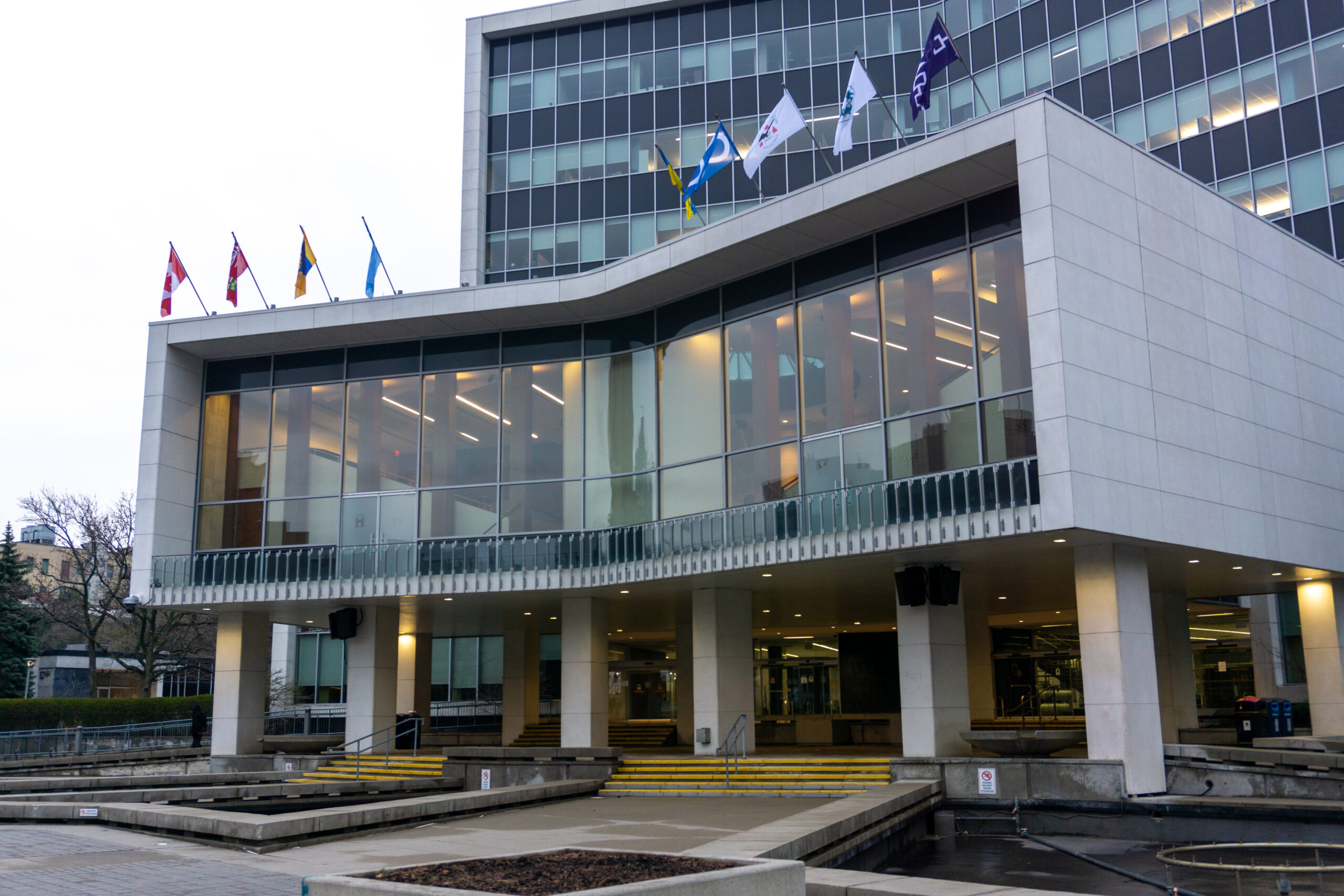The City of Hamilton and Choice Properties have settled Loblaws appeal of the City’s 2016 Transit-Orientated Corridors Zoning along the B-Line LRT corridor.
Choice, the property arm of Loblaws, filed three site-specific appeals for their properties at 50 Dundurn South (Fortinos plaza), 435-447 Main Street East (No Frills plaza), and 1124 Main Street East (Dollarama at The Delta).
Under the agreement, the three properties will be allowed special exemptions to ‘ensure the continued viability of the commercial plazas’ states an affidavit worn by the City’s Senior Project Manager – Urban Planning [as she was then] Shannon Mckie.
Loblaws is allowed to make “minor additions of up to 10% of the total GFA to existing development” including for purposes such as a kitchen space or retail space at their Dundurn property.
The No Frills plaza at 435-447 Main Street East is allowed a lower minimum height and lower minimum facade lengths but these exceptions are subject to Site Plan approval and Loblaws “would bear the risk if seeking to implement any changes through site plan not captured by this special exception.”
No exceptions have been created for 1124 Main Street East.
Hamilton’s Chief Planner Steve Robichaud spoke with TPR in early May when the settlement was reached.
He stated the exceptions will allow Loblaws to continue operating the properties as commercial plazas until such time as market conditions are better for the redevelopment of the sites into higher density mixed-use sites.
The site-specific appeals were the only outstanding appeals of the 2016 TOC zoning bylaw. It was previously brought into force and effect by the then-Ontario Municipal Board on May 1, 2017.
Production Details v. 1.1.0 Last edited: June 24, 2022 Author: Joey Coleman Edit Record v. 1.0.0 original version


Maybe I’m not understanding this right but it seems disappointing that the property owners would be allowed to continue operating these large parcels of land as just commercial areas when they should be redeveloped alongside the LRT based on their location and that the property owners have the financial means to do it. Why would the city allow for this given the recent housing crisis and freeze on the urban boundary?